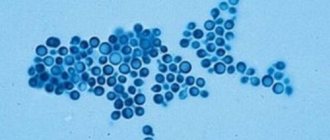Failure of a cat’s hind legs is most often provoked by serious illnesses or previous injuries that require immediate contact with a veterinary clinic. Even the slightest delay can lead to the death of the animal.
Gait disturbances, paralysis of the limbs and spinal injuries can only be cured by a specialist; it is impossible to relieve such conditions on your own. Failure to see a doctor in a timely manner increases the risk of complete loss of sensitivity and mobility of the paws. That is why, in order to avoid complications and return the animal to a confident gait, at the first manifestations of paralysis, you should take the animal to the veterinarian.
Failure of a cat's hind legs: causes of a dangerous condition
Impaired mobility of an animal's limbs can be caused by various reasons. It is very difficult for the owner to independently understand what caused the paralysis, so in this case it will not be possible to do without a trip to the veterinarian.
Failure of a cat's hind legs can be caused by:
- Spinal injuries. Limbs often lose mobility as a result of spinal column injuries. Trauma to the lumbar region especially often leads to such consequences. Animals with access to the outdoors are susceptible to similar injuries. They may be run over by a vehicle or fall from a height or jump awkwardly from a tree. Apartment pets also get injured when jumping from a closet or windowsill. Problems with the limbs are indicated by immobility of the hind legs, tail and general weakness.
- Thrombosis of the femoral arteries. Thromboembolism of the femoral arteries leads to loss of sensation in the limbs, which develops gradually. During its development, the animal experiences severe pain in the lower back, screams and behaves restlessly. If you do not show your pet to a doctor in a timely manner, tissue necrosis will begin and it will be impossible to restore the mobility of the hind legs. In addition, after a few days, thrombosis will lead to death.
- Tick bite. Tick bites, although rare, cause paralysis, leading to the death of the animal. After a tick bite, the animal becomes agitated, followed by weakness, apathy, trembling and paralysis. If action is not taken in time, death occurs.
- Inflammation of the spinal fluid. Myelitis develops against the background of infectious diseases, helminthic infestations, injuries and poisoning. The pathology is characterized by failure of the cat's hind legs, chaotic movements, elevated temperatures, upset stomach, diarrhea and urinary incontinence. Timely treatment will lead to relief of the disease and complete restoration of the mobility of the pet’s limbs.
- Hip dysplasia. With this pathology, bone formation is disrupted. The disease primarily affects large breed cats. The disease leads to the development of severe pain when walking and jumping. If the owner does not provide supportive treatment, this will lead to limb failure.
- Stroke. A cat's hind legs may also fail due to a stroke. The disease can affect both older and young animals as a result of poor nutrition or a sedentary lifestyle. When the cerebral vessels are blocked, paralysis of the limbs develops. Timely treatment, which should begin immediately after diagnosis, will help eliminate it.
- Heart failure. If the cardiovascular system does not work properly, the animal's limbs may fail. This occurs due to oxygen starvation, against the background of which muscle tissue atrophy develops. In addition, heart problems manifest themselves in shortness of breath, dry cough and lethargy.
Other pathologies also lead to loss of limb mobility, which can only be identified by a specialist after a complete examination of the sick cat.
Why can limbs fail?
There are a very large number of factors that contribute to limb failure in a cat. Both hip dysplasia and an inflammatory process in the spinal cord can lead to such a disappointing result.
A very common cause of hind leg failure is a fall from a great height. According to myths, no matter how high a cat falls, it will still land on its paws, since cats know how to group themselves. However, this myth is very far from the truth, and in practice there are a large number of felines that have serious spinal injuries. When an animal falls from a great height, there is a high probability of damage to the lumbar region; nerve endings may be affected, which determine how the pet can control its paws and tail.
Other reasons leading to paralysis of the hind limbs are:
- A herniated disc occurs when the intervertebral disc bulges, causing severe pain in the cat. During disc displacement, compression of blood vessels and nerve endings occurs, which leads to a problem in the transmission of impulses to the brain, and this is very important for the normal functioning of the hind limbs.
- There is also a disease called thromboembolism, when blood clots form in the femoral artery. The resulting thrombus is a solid substrate that cannot be encountered under normal conditions, and it completely blocks the normal movement of blood throughout the body.
- Inflammation in the spinal cord can occur due to infection of the body with worms or poisoning with salts of heavy metals. When your pet becomes inflamed, you may experience high fever, urinary incontinence, weakness, and dehydration.
- Stroke in cats is quite rare, however, if it does occur, the consequences for the animal are irreversible. In this case, paralysis develops as vascular damage occurs. In case of a stroke in cats, it is necessary to act with lightning speed and without delay, otherwise the consequences can be very diverse.
- Hyperparathyroidism of nutritional origin can occur if the cat’s body lacks vitamin D, calcium, or if the phosphorus level is significantly higher than normal. Thus, the gland wears out, a violation of the bone structure occurs, which leads to the animal limping, the gait can be very unstable, and the paws move apart. With this disease, cats may also experience seizures. It is very important to diagnose the disease in time in order to begin timely treatment and completely relieve the animal from painful and unpleasant sensations.
Symptoms characteristic of limb failure
Paresis of the limbs is represented by the following symptoms:
- complete or partial impairment of motor functions. The animal stops moving quickly, drags its paws or moves crawling;
- change in gait. If swaying and pulling up of the limbs is normal for a small kitten, then failure of the cat’s hind legs requires immediate intervention by a veterinarian;
- atrophy of the muscular system. The muscles of the hind limbs lose their elasticity;
- soreness when feeling the hind legs. The cat screams and struggles when the back of the body is probed;
- lack of sensitivity. The animal stops feeling cold and warmth with its paw pads.
If such symptoms appear, your pet should be taken to a veterinarian immediately.
The cat's back legs suddenly stopped working, possible symptoms
Symptoms when a cat suddenly loses its hind legs. The function of the paws is impaired, completely or partially. The pet's muscles become sluggish and flabby. Painful sensations or other sensitivity are either dull or absent altogether. The animal stops feeling touch and temperature.
First aid and treatment when a cat suddenly loses its hind legs
In cases where a cat’s hind legs suddenly fail, it is necessary to provide warmth to the affected limb. Warm compresses are necessary. Paraffin treatment is carried out. A course of treatment with B vitamins is prescribed. They must be administered intramuscularly. An injection is given into the affected limb. Also gamavit, SA37. To restore mobility, experts recommend acupuncture therapy, Su Jok.
At the first symptoms and suspicion, immediately contact a veterinary clinic. Where the cat will be examined. The doctor will diagnose and prescribe treatment.
What the veterinarian should do when you bring him your cat:
- Perform a primary neurological examination of the animal
- Send for an x-ray of the spine
- Perform an ultrasound of the peritoneum
- If there is a suspicion of infection, a sample is taken for bacteriological analysis.
- Urine and blood tests are taken
- An MRI of the head and spine is mandatory
- The sensitivity of the paws to pain and touch is checked.
Remember all the above symptoms and tips. Don't be scared or panic. They can help you properly understand the reasons why your paws may be failing and begin treatment immediately. Your pet will be grateful to you for everything.
First aid
If the owner notices a failure of the cat’s hind legs or problems with mobility, then before taking it to the veterinarian, he must provide first aid to the animal.
First you need to calm the pet and put it in a carrier or house. Then, if the hind paws are cold, you need to warm them up with a heating pad. After this, you need to immediately go to the veterinary clinic.
Symptoms
As is clear from the reasons, the symptoms vary. The main reasons and also expectations from recovery were discussed above. Now let's look at more detailed and all the symptoms for each disease.
The main symptoms of paralysis in cats:
- Inability to feel the hind legs;
- Incontinence;
- Problems with pulse and breathing;
- Apathy;
- Loss of appetite.
In case of injury, paralysis will be accompanied by symptoms:
- The tail is relaxed because the spine is damaged;
- Bleeding and other noticeable symptoms upon impact and fracture;
- Damage to the claws and paws of not only the hind ones, but also the front ones.
In case of hernia or inflammation of the spinal cord:
- Pain when touched;
- Apathy;
- Walks and bends strangely;
- Aggression.
For thromboembolism and fibrocartilaginous embolism:
- The hind legs have failed, blood does not flow to them, they are blue and cold;
- Lack of appetite and apathy;
- Doesn't react to anything;
- Irregular pulse and weak breathing.
In case of a stroke, paralysis will be accompanied by symptoms:
- Suffocation;
- Difficulty breathing, swallowing and eating;
- The animal literally falls from its paws to the ground;
- Unresponsive to stimuli, in a state of shock.
When bitten by a tick:
- Symptoms of paralysis in cats due to a tick bite
- Difficulty swallowing;
- Apathy;
- Cough;
- Lack of appetite;
- Anxiety.
How to treat paresis of the lower extremities?
After delivering the cat to the veterinarian, the specialist conducts an examination, determines the degree of sensitivity of the hind limbs, takes an X-ray and ultrasound, and also takes the tailed patient’s blood and urine for analysis.
Therapy is prescribed only after an accurate diagnosis has been made. It includes medication, physiotherapy, massage, and sometimes surgery.
Diagnosis of myopathy
The disease is expressed:
- increasing symptoms;
- absence of seizures and neurological manifestations;
- selective localization;
- characteristic "duck" gait.
For an accurate diagnosis, first of all, an anamnesis is collected to find out whether there have been cases of this disease in the family. Then an examination is carried out by a neurologist, during which the doctor evaluates muscle tone, the spread of weakness, the presence of muscle thinning, the degree of body deformation, the severity of reflexes, gait, and asks the child to sit up from a lying position and stand up from a sitting position.
Laboratory diagnostics include:
- clinical blood test;
- muscle biopsy;
- checking thyroid hormone levels.
A genetic examination of the child and close relatives is also carried out. Source: https://www.mda.org/disease/congenital-myopathies/diagnosis The Muscular Dystrophy Association (MDA).
Drug treatment
If paresis of the limbs is confirmed, appropriate drug therapy is selected for the cat. Depending on the disease that caused the paralysis, various drugs are used. They can be presented:
- antibiotics to relieve inflammation caused by infection;
- vitamins to strengthen the immune system;
- drugs that thin the blood for thrombosis and stroke;
- anti-mite drugs;
- diuretics.
The treatment regimen may differ depending on the underlying disease that caused the failure of the cat's hind legs.
Treatment
For any owner, this condition of his pet is a real test. Many people are simply lost and think that putting their pet to sleep is the best way out of the situation. After all, no one suffers and everything ends quickly. Of course, this is everyone's personal choice. But we are sure that in most cases paws can be saved
, because in some diseases they fail for a short time and function after treatment.
Treatment depends on the cause of the disease. As we have already learned, there are many reasons, hence the medications and recovery time will be different. The main thing is to follow the instructions of the treating veterinarian, who has already encountered such situations and knows exactly what to do.
- However, the owner can facilitate and speed up recovery from paralysis in cats:
- If your doctor allows it, you can massage for 10 minutes several times a day. The massage should be intense, rubbing, but light. This is done so that blood continues to flow into the animal’s paws and they do not die off or atrophy due to lack of movement and activity;
- imitation of walking, extension and flexion of paws;
- You can hold the animal and let it try to move its paws on its own. Assist and develop as needed;
- Water treatments and swimming also help you recover faster. However, it is recommended to do this already in the last stages of recovery and only with the recommendation and approval of a doctor;
- In the final stages of recovery, scratch and lightly tickle the paws to restore sensitivity.
Physiotherapy
Recovery from limb paresis is very long and requires mandatory physiotherapeutic procedures.
To help your pet recover faster, veterinarians advise performing a number of exercises that will help restore neurological functions:
- Bike. To perform this exercise, the animal must be placed on its back and alternately perform circular movements with its hind legs for five minutes, simulating riding a bicycle.
- Paw massage. Every day, the owner must knead the cat’s paw pads and the paralyzed limbs themselves.
- Carding. A sick pet needs to be scratched in different places on the body. Progress will become noticeable when the cat, after the next “scratching”, begins to try to scratch itself with its hind paw.
- Rolling on the ball. To do this, take the cat and place it with its stomach on the ball, making sure that its limbs slightly touch the floor. In this position, the animal must be slowly rolled back and forth, holding it by the back.
- Support. You need to pass a wide strip of fabric under your pet's belly and walk with it around the room, holding the ends of the fabric.
- Moving the hind legs. To perform this exercise, you need to grab the animal by the hind legs and slowly move them, imitating walking.
- Swimming in the bathtub. This exercise is suitable for those cats who are not afraid of water. To perform this, the animal must be forced to swim in the bathtub every day, supported under the stomach and head so that it does not swallow water.
"Important! To speed up recovery, after a cat’s hind legs fail, it is necessary to work with it daily, devoting at least an hour a day to physical therapy.”
What are the consequences of failure of a cat's hind legs?
Failure of a cat's hind legs is a complex ailment that requires immediate treatment at a veterinary clinic. Self-medication of paresis is completely excluded, since it will not give any results and will only worsen the animal’s condition.
In the absence of proper drug treatment, paresis of the limbs can cause death, which will occur within a few days and will be extremely painful for the pet.










